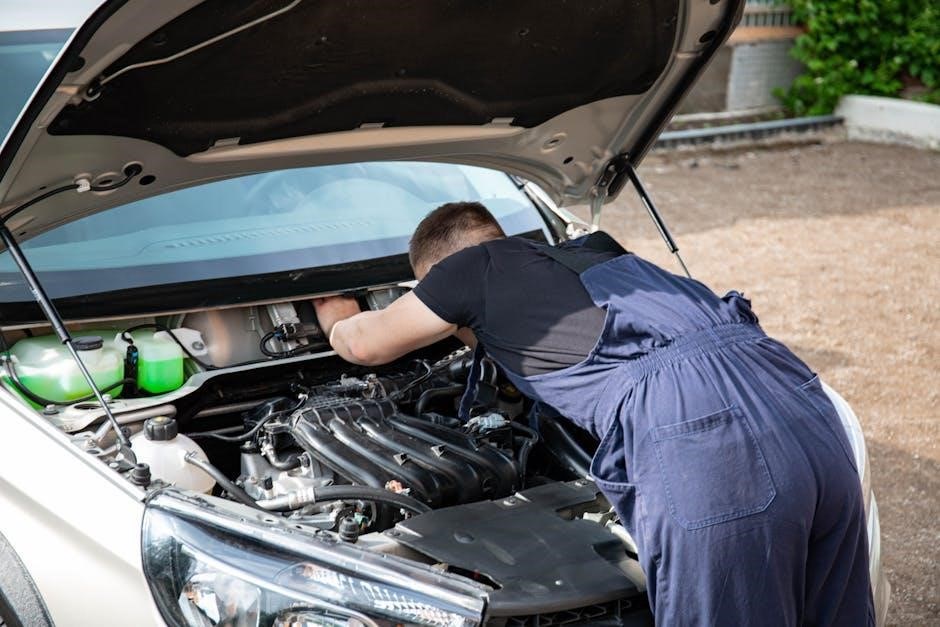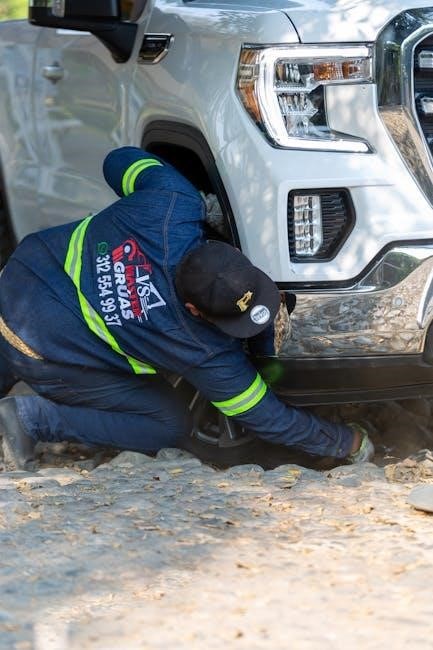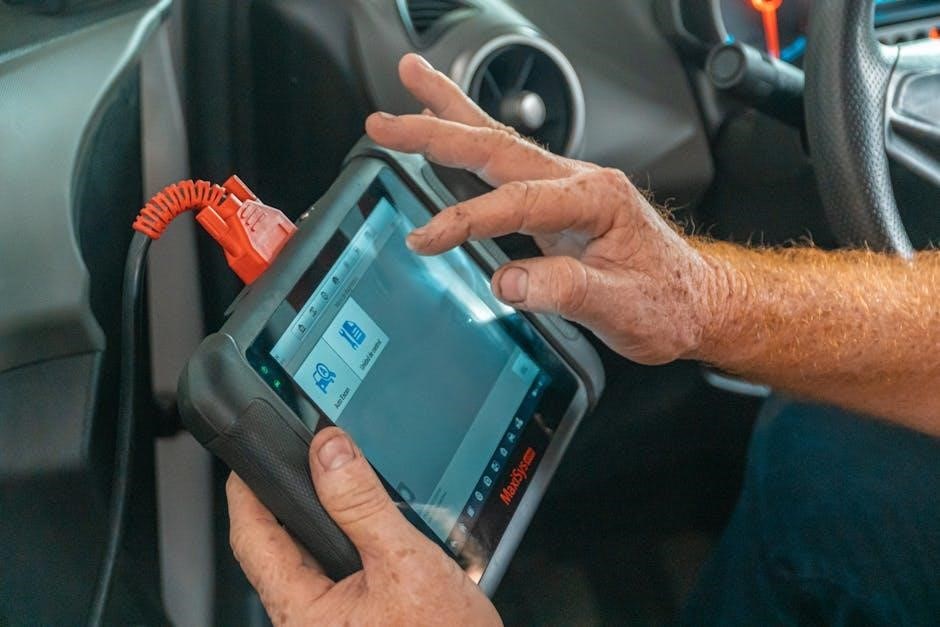Welcome to the GE Washer Troubleshooting Manual, your guide to resolving common issues with GE washing machines. This manual helps users identify and fix problems efficiently, ensuring optimal performance and extending the lifespan of their appliance.
1.1 Overview of GE Washers and Importance of Troubleshooting
GE washers are known for their durability and innovative features, catering to various household needs. Troubleshooting is essential to maintain optimal performance, address common issues, and prevent costly repairs. By identifying and resolving problems early, users can extend the lifespan of their washer and ensure efficient operation. This manual provides a comprehensive guide to diagnosing and fixing issues, empowering users to take control of minor repairs and understand when professional assistance is necessary. Regular troubleshooting also helps in maintaining energy efficiency and ensuring safety, making it a crucial part of appliance ownership.

Understanding Common Issues in GE Washers

GE washers may experience malfunctions like not starting, improper spinning, or excessive noise. Identifying these issues early ensures timely fixes, preventing further damage and maintaining efficiency.
2.1 Washer Not Starting or Turning On
If your GE washer fails to start or turn on, it may be due to a power supply issue, faulty control panel, or model-specific quirks. Ensure the washer is properly plugged in and the outlet has power. Check the circuit breaker or fuse box to confirm the circuit isn’t tripped or blown. If the control panel isn’t responding, it could indicate a software glitch or faulty sensors. For newer models, some features like delayed start or lockout modes might prevent operation. Always refer to your specific model’s manual for guidance, as troubleshooting steps may vary. If issues persist, consult GE’s official support or contact a certified technician.
2.2 Washer Not Spinning or Draining
If your GE washer isn’t spinning or draining, it could indicate issues with the drain pump, clogged filters, or improper loading. Start by checking the drain hose for kinks or blockages and ensure it’s properly secured. If the washer is overloaded or unevenly loaded, it may fail to spin effectively. Regularly clean the drain pump filter, as debris can accumulate and hinder water flow. For models like GTW720/GTW845 or WPDH8910K0WW, consult the manual for specific instructions on accessing and cleaning the pump. If the problem persists, a faulty drain pump or sensor may require professional attention. Always refer to your model’s troubleshooting guide for tailored solutions.
2.3 Excessive Vibration or Noise During Operation
Excessive vibration or noise in your GE washer can be caused by improper leveling, unbalanced loads, or blockages in the drain system. Start by ensuring the washer is evenly leveled and installed on a stable surface. Check the legs for proper adjustment to prevent wobbling. If the noise persists, inspect the drain pump filter for debris, as blockages can cause unusual sounds. Additionally, verify that loads are balanced and not overloaded, as uneven distribution can lead to vibration. For models like GTW720/GTW845 or WPDH8910K0WW, consult the manual for specific troubleshooting steps. If the issue continues, professional assistance may be needed to address internal components.

Step-by-Step Troubleshooting Guide
This guide provides a systematic approach to diagnosing and resolving common GE washer issues, helping you efficiently address problems like power supply, drainage, and noise.
3.1 Checking Power Supply and Basic Connections
Start by ensuring the washer is properly plugged into a functioning electrical outlet. Verify that the power cord is securely connected to both the washer and the wall. Check the circuit breaker or fuse box to confirm that the circuit hasn’t tripped or blown. If the washer still doesn’t power on, test the outlet with another appliance to ensure it’s working. Additionally, inspect the power cord for any visible damage or frays that could prevent proper connection. If issues persist, consult the manual or contact a professional. Always unplug the washer before inspecting internal connections for safety.
3.2 Diagnosing Cycle Selection and Control Panel Issues
If your GE washer isn’t responding to cycle selections or the control panel is unresponsive, start by restarting the machine. Unplug it, wait 30 seconds, and plug it back in. Check if all buttons are clean and free of debris. Ensure the correct cycle is selected and that the lid is closed properly. If the issue persists, verify that the control panel is functioning by testing each button. Refer to the manual for guidance on resetting the control panel. If problems remain, it may indicate a faulty control board or sensor, requiring professional assistance. Always follow safety precautions when troubleshooting electrical components.
3.3 Identifying and Resolving Drainage Problems

Drainage issues in GE washers can often be resolved by checking the drain hose and pump filter. Ensure the drain hose is not kinked or clogged and that it’s properly positioned. If water remains in the tub, inspect the pump filter for debris like coins or lint. To access the filter, locate it at the bottom front of the washer. Remove any blockages and ensure all connections are secure. If the problem persists, check for blockages in the drainpipe or sewer line. Regularly cleaning the filter and hose can prevent future issues. Always unplug the washer before servicing to avoid electrical hazards. If unresolved, consult the manual or contact a professional.
Accessing and Using GE Washer Manuals
Access GE washer manuals online by visiting the official GE Appliances website. Enter your model number to download PDF manuals, ensuring proper use and troubleshooting.
4.1 How to Download GE Washer Manuals Online

To download GE washer manuals, visit the official GE Appliances website. Enter your washer’s model number in the search bar at the top of the page and press Enter. This will direct you to the specific product page, where you can find and download the PDF version of the manual. The manual includes detailed instructions for installation, operation, and troubleshooting. For older models, select the appropriate document type, such as “Owners Manual” or “Use and Care Manual.” Save the file for easy access and reference. This resource ensures you have all the information needed to maintain and repair your GE washer effectively.
4.2 Navigating Through the Manual for Specific Issues
Once you’ve downloaded the GE washer manual, navigate through its sections to find specific information. The manual is organized into clear categories, such as Controls, Specialized Fabric Guide, and Before You Call for Service. Use the table of contents or search function to quickly locate topics like troubleshooting, installation, or maintenance. For example, if your washer isn’t turning on, refer to the Diagnosing Cycle Selection or Power Supply sections. The manual also includes diagrams and step-by-step instructions to help resolve common issues. By focusing on the relevant sections, you can efficiently address problems and ensure your GE washer operates smoothly. This organized approach makes DIY troubleshooting straightforward and effective.

Safety Precautions and Best Practices
Always ensure the washer is properly installed and leveled to avoid vibration and noise. Never overload the machine, as this can cause damage or safety hazards.
5.1 Essential Safety Tips for DIY Troubleshooting
When performing DIY troubleshooting on your GE washer, safety should always be your top priority. Begin by disconnecting the power supply to avoid electrical shocks or accidents. Ensure the washer is cool and drums are stationary before accessing internal components. Never bypass safety features like lid locks, as this can lead to serious injuries. Always use genuine GE parts to maintain appliance integrity and safety standards. Refer to your owner’s manual for specific guidelines and warnings. If you encounter complex issues or feel unsure, consider consulting a professional technician. Regularly check for blockages in drainage systems and test repairs thoroughly before resuming normal use. Prioritize your safety and the longevity of your appliance.

5.2 When to Call a Professional Repair Service
While DIY troubleshooting can address minor issues, certain problems require professional expertise. If your GE washer experiences persistent mechanical failures, electrical malfunctions, or complex errors, it’s best to contact a certified repair service. Professionals have the tools, training, and experience to diagnose and fix issues like faulty control panels, damaged motors, or internal component failures. Additionally, if you’re unsure about a repair or feel unsafe attempting it yourself, a professional ensures the job is done correctly and safely. They can also provide warranty coverage and genuine parts, guaranteeing reliable service and extending your washer’s lifespan. Always prioritize professional help for major repairs to avoid further damage or safety risks.

Leave a Reply
You must be logged in to post a comment.